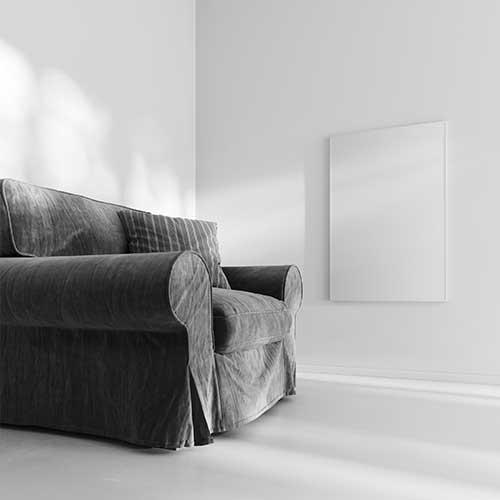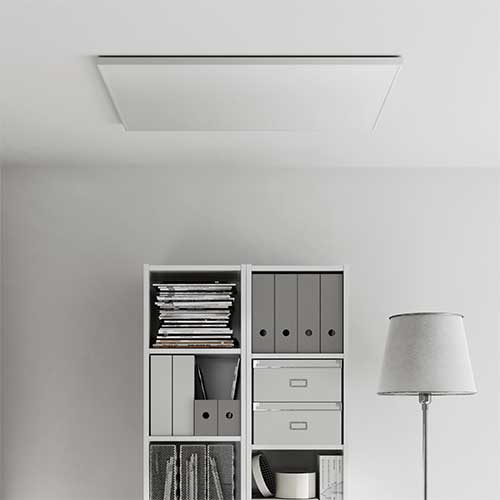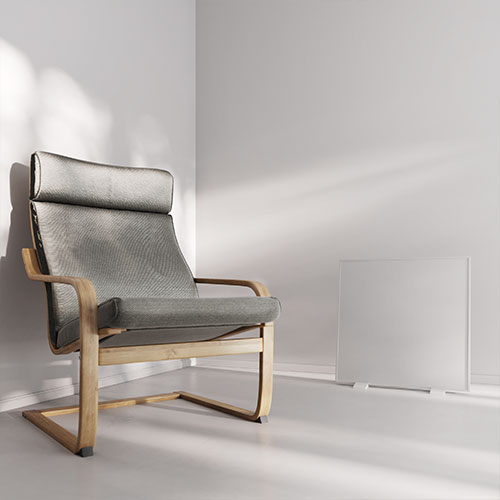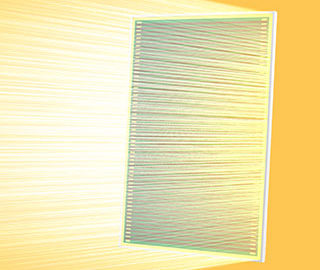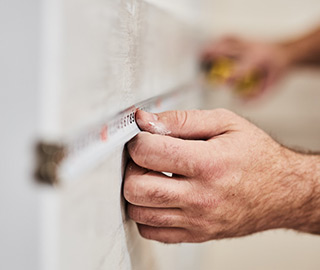Infrared heating: costs, function and size
Infrared heaters are very popular – and not without reason. They are particularly efficient heating systems that provide even and pleasant warmth throughout the room.
With the latest infrared technology, the desired room temperatures can be reached quickly, so that electricity consumption and costs are comparatively low. You can learn everything you need to know about infrared heating in this article.
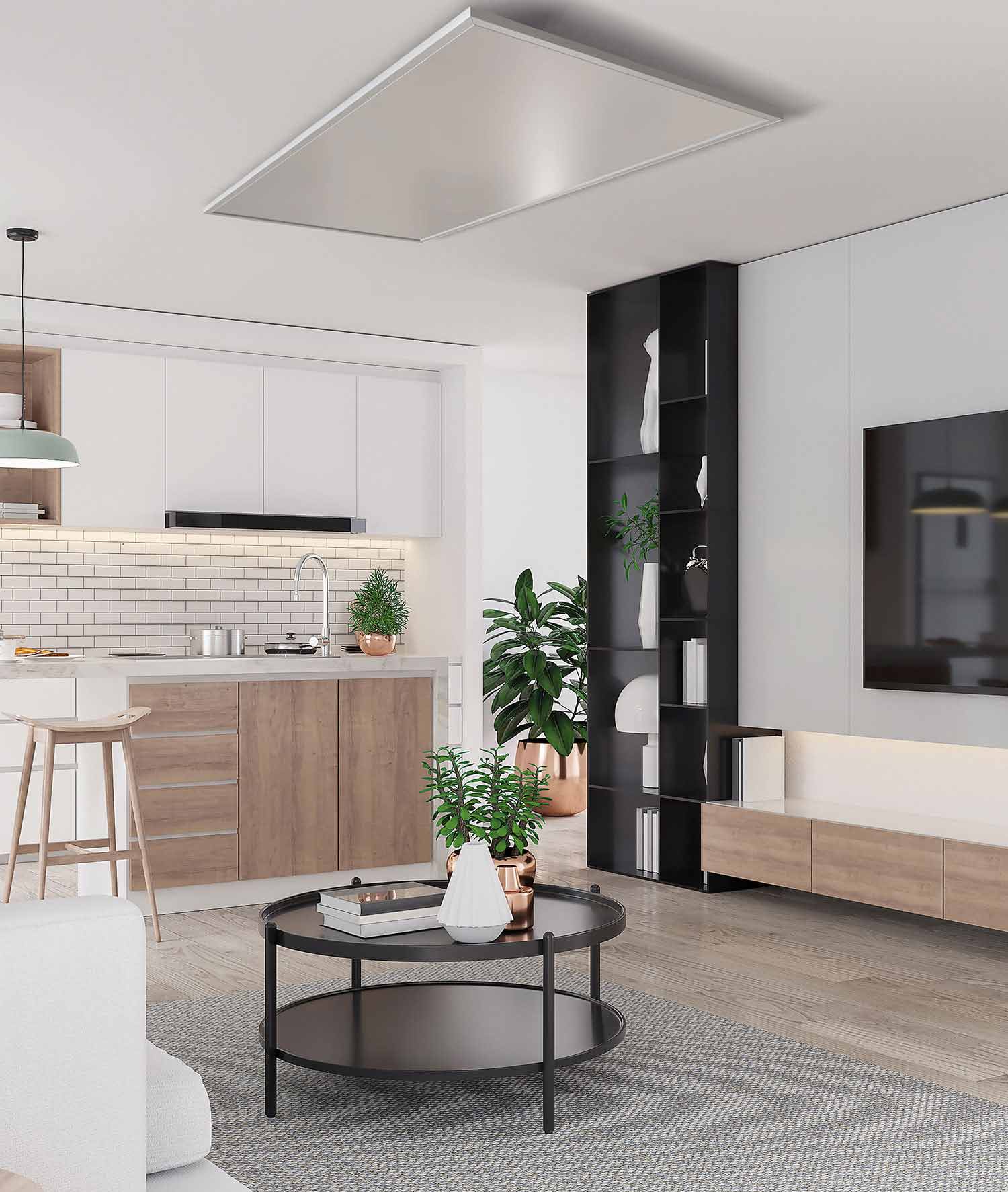
How does infrared heating work?
Probably everyone has heard of infrared heating, but few know how it differs from classic convectors. Therefore, the function of infrared heating must be compared with that of conventional heating systems.

Convection heating
Classic radiators work on the principle of convection. The heated air rises upwards before it cools down again and sinks to the floor. Since this process is constantly repeated, a cycle is created.
Areas of application for infrared heating
Thanks to its innovative technology, an infrared heating panel can be used in many different ways – both in private homes and in public facilities. Thus, there are only a few places where infrared panels cannot be used. Among others, there are the following areas of application.
Infrared heating panels as supplementary heating
Infrared heating can be optimally combined with central heating and used as a practical additional heater in the transitional period. Whether in spring or autumn: heating with infrared creates pleasant room temperatures that create a real feel-good atmosphere.
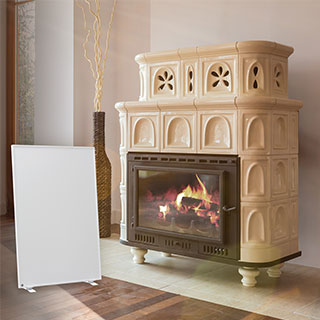
Infrared heating in the bathroom
In damp rooms, such as the bathroom, a special heating method is needed. Here, you have to reckon with a higher heat demand and a higher humidity than in the rest of the home. Heating with infrared is therefore the optimal heating system for the bathroom. It provides quick heat and keeps the substance of the building dry, so that mould can be successfully prevented.
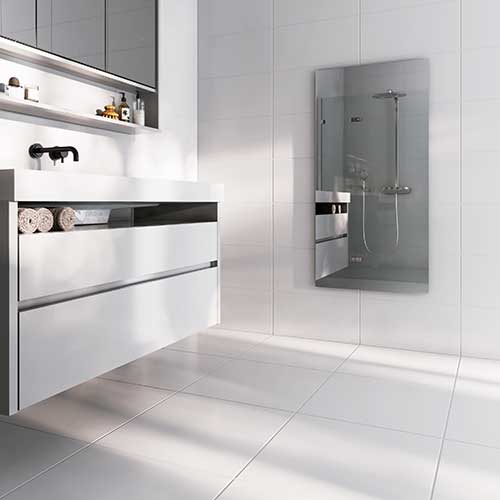
Infrared panels for new buildings
Newly constructed buildings are usually optimally insulated and therefore ideal for the use of infrared heating. Due to the good insulation, new buildings have a much lower heat requirement than old buildings. The use of a conventional heating system is not worthwhile in this case – a little extra heat with infrared heating, on the other hand, is very much worthwhile.
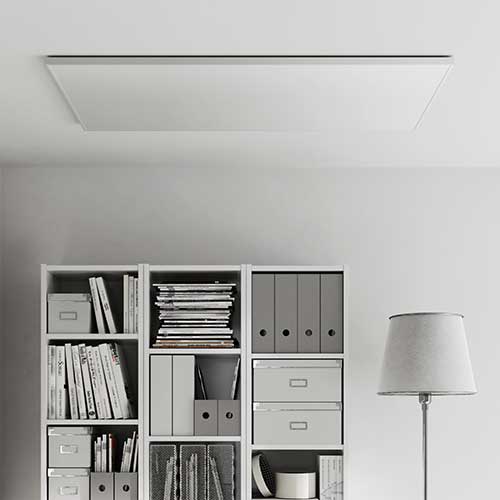
Infrared heating for old buildings
Many people wonder whether infrared heating can or should be used at all in old buildings. In fact, like any other heating system, it requires more energy if the building is poorly insulated. However, if it is a freshly renovated and refurbished old building, infrared heating can be used without further hesitation.

Heating with infrared in the children’s room
In the children’s room, too, infrared heating is the perfect heating system for creating the ideal room temperatures for the youngsters. While a little more heat is recommended during the day – when playing and romping – lower temperatures are advisable in the evening and at night. When heating with infrared, the room temperatures can easily be adjusted to the children’s need for warmth.

Advantages and disadvantages of infrared heating
If you are thinking about buying an infrared panel and want to make a good purchase decision, you should know both the advantages of infrared heating and the disadvantages of the modern heating system. We have listed the most important features of infrared heaters for you:
| Advantages | Disadvantages |
|---|---|
| + Low initial costs | – Expensive operation with unfavourable electricity rates and unrenovated buildings |
| + High flexibility | – High emission values for electricity from fossil fuels |
| + Provides pleasant warmth | |
| + Fast response time | |
| + Prevents mould | |
| + Ensures a healthy indoor climate | |
| + Low room temperature with higher perceived temperature | |
| + High degree of warmth | |
| + Long service life | |
| + Emission-free heating with photovoltaic operation or green electricity connection |
| Advantages | Disadvantages |
|---|---|
| + Low initial costs | – Expensive operation with unfavourable electricity rates and unrenovated buildings |
| + High flexibility | – High emission values for electricity from fossil fuels |
| + Provides pleasant warmth | |
| + Fast response time | |
| + Prevents mould | |
| + Ensures a healthy indoor climate | |
| + Low room temperature with higher perceived temperature | |
| + High degree of warmth | |
| + Long service life | |
| + Emission-free heating with photovoltaic operation or green electricity connection |
Costs for infrared heating
Electric heaters have a rather negative reputation. After all, heating with electricity is generally considered a waste of energy. Thermal energy must be obtained in a different way, and in a more environmentally friendly way – that is the general consensus. In fact, however, heating with infrared is very effective – the following costs are to be expected.
Acquisition costs
Compared to conventional heating systems, the acquisition costs for infrared heating are low. The price always depends on the size of the heater, the manufacturer and the type and performance of the thermostat selected.
Operating costs
The cost of the electricity consumed always depends on several factors. First of all, the power of the infrared panels plays an important role – this in turn is determined by the size and height of the room. How intensively the heating system has to work always depends on…
- the building insulation
- the number of outer walls in the room
- the quality of the infrared panel
- and the installation location.
For a room
✓ with a size of about 20 m2 and a ceiling height of 2.5 m,
✓ in a well-insulated building
✓ a wattage requirement of about 25 watts / m3
✓for average use about 10 h per day
✓and an electricity price of 2.558 ZAR per kWh
you get operating costs of ZAR 959,- per month for this heating panel.
Recalculated:
20 m2 x 2.5 m = 50 m3 heating volume
50 m3 x 25 Watt = 1250 Watt = 1,25 kW
1.25 kW x 300h heating demand / month = 375 kWh per month
375 kWh x ZAR 2.558 = approx. 959.25 ZAR heating costs per month
Heating with infrared – 3 tips for lower costs
Of course, it is a considerable advantage if the purchase costs for an infrared panel are kept within reasonable limits. The operating costs do not have to rise to dizzying heights either – as long as you follow a few important tips. We have 3 tips for you here on how you can save a lot of money when heating with infrared.
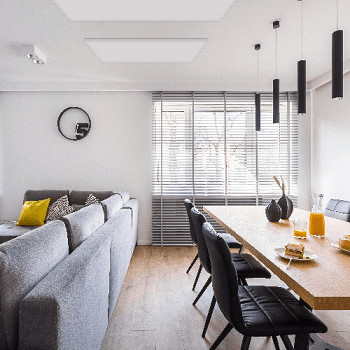
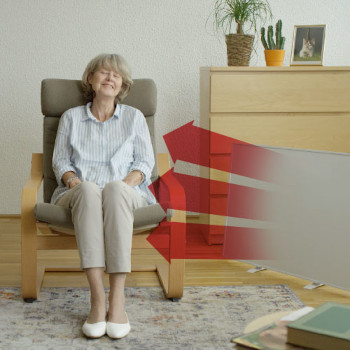
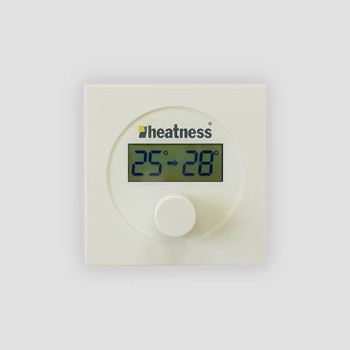
1. several small infrared panels
When heating with infrared, you should not use just one heating element – this will not distribute the heat throughout the room. Instead, choose several small infrared panels to ensure even temperatures.
2. Correct placement of the infrared heater
The individual infrared panels should be positioned in the room so that the heat generated can spread unhindered. The infrared panel should never be covered by curtains or furniture, for example – otherwise the heating will work at maximum power, but the desired room temperature will take far too long to be reached.
3. temperature control with thermostat
For the most efficient heating, infrared heaters can be equipped with a practical thermostat. This intelligent temperature controller automatically switches off the heater as soon as the desired room temperature is reached. The thermostat only switches the heating on again when the temperature falls below the personal comfort temperature. In this way, electricity is only consumed when the heating actually produces heat.
Size of the infrared heating
How do you actually choose the right infrared panels? Comprehensive planning is the key here. First of all, you should be clear about the intended use. If you know in which room your future infrared panels will be used, you can make a well-considered purchase decision. In addition, the size of the room also plays an important role when it comes to selecting the appropriate heater size.
The following table provides information about the area you can heat with the respective panel sizes and outputs. For example, an infrared heater for a room of about 15 m2 should have an output of 800 watts. If the room has several outside walls, a rather larger model should tend to be selected.
| Size of the heater | Size of the room* | Dimensions | Power output |
|---|---|---|---|
| 15 m² | 60 x 120 cm | 800 Watt | |
| 10 m² | 60 x 90 cm | 600 Watt | |
| 7 m² | 60 x 60 cm | 400 Watt | |
| 5 m² | 30 x 120 cm | 400 Watt | |
| 4 m² | 30 x 90 cm | 300 Watt |
*These figures are based on a well-insulated room with a room height of 2.5 m.
Placing infrared heating – what should I pay attention to?
Infrared panels should be placed in the room so that, if possible, the entire room can be supplied with heat radiation. The panel emits infrared radiation at a radiation angle of about 130 ° to the front. If the room branches off around the corner, for example, the radiation does not reach these parts of the room directly and a second panel may have to be added.

For the correct placement, it is best to consider the following tips:
Designs for infrared heating
Infrared panels are available in different designs. In terms of material, there are three different options: Aluminium, glass or ceramic. Each of these variants has certain advantages. Glass, for example, is the most flexible in terms of design, while ceramic is considered the most heat-conductive material.
You also have the choice between wall heaters, floor heaters and ceiling heaters. Depending on where you find the best space, you can choose the respective infrared panels. You can be sure: Infrared heaters are available for every purpose and taste.
Montage der Infrarotheizung
You do not necessarily need a specialist to install an infrared panel. With a little manual skill, you can easily mount the selected infrared panels yourself. To do this, use the screws, dowels and fixtures provided. A template helps to drill the holes for the dowels in the right place.


The connection can either be made externally via the socket or you can run the cable inside the wall and connect it directly to the power supply. The second option, however, should be left to a specialist company.
Buying the right infrared heating for every room
An infrared panel is not only an effective heating system, but also a visual eye-catcher. At Heatness® you will find the modern electric heating for any room. If you would like to buy an infrared heater, you are sure to find the right model here. Browse through our extensive range right now.
FAQ: Frequently asked questions about infrared heating
Are infrared heaters electricity guzzlers?
Although infrared heaters are powered by electricity, they do not necessarily have to be power guzzlers. In a well-insulated building, with the right electricity tariff and using an intelligent thermostat, the final electricity consumption of infrared heating is kept within limits.
How expensive is it to heat with infrared?
The cost of infrared heating is comparatively low. The purchase costs are about 30-70% less than those of conventional heating systems. The consumption costs are not high either. Heatness® infrared panels provide pleasant warmth even at low room temperatures.
How effective is infrared heating?
Electric heaters have a bad reputation because they run on electricity. But infrared heating can be equipped with a thermostat. This practical temperature controller detects when the ideal room temperature has been reached and switches the heating off automatically. This way, electricity is only consumed when heat is actually being generated.
Which infrared heaters are available?
Our infrared heaters are available in different versions for many purposes. At Heatness® you will find infrared panels in elegant glass and high-quality ceramic as wall or ceiling heaters as well as mobile floor-standing units. We also offer special infrared towel rails for the bathroom that preheat and dry your towels with infrared heat.
How dangerous is infrared heating?
Is infrared heating harmful?
No, heating with infrared is actually beneficial to your health. Heatness® infrared panels offer absolute safety. They are IP54 compliant and therefore splash-proof. In addition, our models are equipped with temperature sensors – these prevent overheating by automatically switching off the heating.

